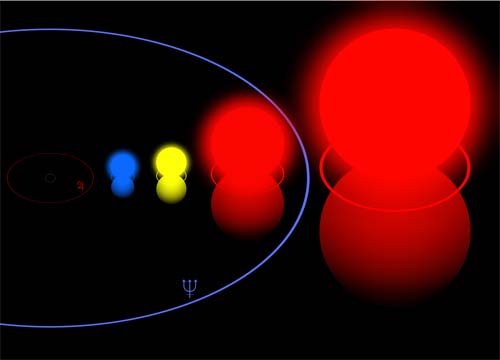hypergiant

Comparison of (from left to right) the Pistol Star, Rho Cassiopeiae, Betelgeuse, and VY Canis Majoris superimposed on an outline of the Solar System. The blue half-ring centered near the left edge represents the orbit of Neptune, the outermost planet of the Solar System.
Precise definitions vary, but all agree that hypergiants are the most massive and luminous type of star. They are on the verge of instability with masses of up to about 100 solar masses, strongly developed large-scale atmospheric velocity fields, excessive mass loss, and extended circumstellar envelopes.
Hypergiants can survive only a couple of million years or so before exploding as supernovae and, theory insists, leaving behind black holes. Only about a dozen are known in our galaxy, including Eta Carinae, P Cygni (see P Cygni profile), and Rho Cassiopeiae. S Doradus is a hypergiant in the nearby Large Magellanic Cloud.


